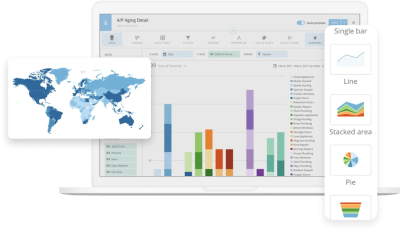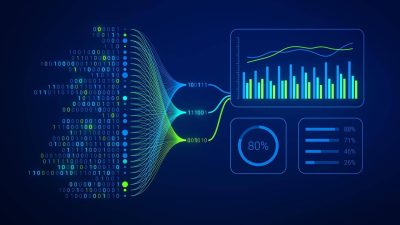A broad overview of composable analytics
BI has been around for a long time, but the world is changing. The market is moving faster than ever before, and customers expect more from their business, especially when it comes to personalization and highly relevant services. As a result, the era of faceless clients is over.
For example, a consumer seeking new information about a potential housing mortgage should never be told by a local branch that it will take two weeks to process without first getting to know that consumer’s background. This information should have already been gathered to better understand the client’s needs and anticipate their requests.
That’s just not acceptable when you think about how quickly we can get information from our phones or computers now (and how much easier it is). This change in customer expectations alone means that businesses need to be better able to meet those needs faster and more efficiently than ever before—and composable analytics can help them do just that.

What are composable analytics?
Composable analytics is a new way of doing business intelligence. It takes advantage of new technologies like machine learning, intelligent data management, and microservices to transform how companies use data.
Often, this involves using no-code or low-code solutions in combination with embedded analytics. This way, you can literally “compose” new systems that leverage all the available tools to garner value-based, data-driven insights.
Composable analytics is the next level of business intelligence. It’s based on two principles: composability and agility. The more we can manipulate the data we have gathered, the better the quality of the insight and outcome for future development. Not only does this require flexibility, but durability and quality of data as well.
Why does this matter to businesses?
Businesses have been expected to be nimble for decades, but the pace of change has increased exponentially in recent years. It’s not just about reacting more quickly than your competitors through agile frameworks like Scrum; it’s also about being able to respond rapidly to customer needs, new opportunities, and changing regulations.
This means that analytics must be done at scale—in other words, analytics tools and processes need to be composable so they can be combined as needed with other systems and methods.
It comes down to competition. If your top three competitors are all using this advanced technology to better reach clients, you must adopt the same tools or risk losing significant market share.
Why composable analytics matter
Composable analytics is a new approach to business intelligence that has been gaining in popularity, especially in the last few years. It’s more agile, flexible, and scalable than traditional BI. There are many reasons why this is so critical in today’s market.
As just a single example, composable analytics can be applied to a variety of use cases, from real-time insights such as fraud detection or predictive maintenance (the process of using sensors on machinery to predict when repairs are needed) through to historical analysis for compliance purposes or planning future product releases.
Another example would be to help in hiring. One area in which analytics can be used to find flexibility is by identifying the right employees and candidates for a job. This is important because it allows you to establish a team that has the ability to adapt to changing conditions.

Next, customers’ reactions and preferences can be analyzed through composable analytics.
For example, every time someone buys an item at your store or restaurant, composable analytics will record all of the data associated with that transaction, including:
- Product type and size
- How long they waited
- If they used cash or credit
- What items they bought with their purchase
- How much money they spent on each item
- And plenty of other attributes
Finally, composable analytics allows businesses to better understand why consumers buy from them instead of from competitors who offer similar products at lower prices.
When big data changes
You may have heard a thing or two about “big data” over the past few years. But perhaps you’ve noticed that the term is becoming passé and being replaced with a new phrase: wide data.
The distinction between big and wide is in how we define it. What makes big data big? It’s large quantities of high-quality structured, unstructured, and semi-structured data all collected in one place—sort of like a bank vault where you store your savings account statements and tax returns (along with some current information).
In contrast to this idea of collecting everything into one place are separate repositories for different types of information—like your 401(k) retirement plan statement from work versus your checkbook register list at home. With wide data ,there is no single repository. Instead, each piece of information lives in its own siloed location across many different locations around the globe.
So how does this relate to composable analytics? Well, if your organization collects lots of small pieces of information, then it will be easier for them to compose new insights from these disparate sources without having to go back through all those individual repositories manually when needed—which would be time-consuming at best.
Gaining greater insight
Datasets are generated and stored in a variety of formats across a wide range of sources. The ability to combine those datasets with other related data, such as metadata, crawl logs for websites, or internal documents, can provide significant insight into the true nature and behavior of an organization’s data assets.
Composable analytics is about making sense of this data—not just analyzing it but also exploring its potential uses.
Composable analytics is not primarily concerned with how you get your hands on the data, or even what kind it is (for example, structured vs. unstructured), but instead focuses on enabling a greater capability in data insight and exploration by making it easier to utilize tools that specialize in certain types of analysis.

How it relates to BI
Composable analytics is an emerging approach to business intelligence. It’s a way to combine different data sources, opening up new insights and opportunities for organizations.
Composable analytics is more agile, flexible, and cost-effective than existing BI solutions because it takes advantage of cloud infrastructure and modern technologies like Hadoop and NoSQL databases—allowing you to combine data from multiple sources such as transactional systems or unstructured data such as email or social media posts—and then run the same analysis across this combined dataset.
The world is changing fast, so why shouldn’t your business analytics? Traditional business analytics is built on a foundation of rigid, inflexible, and non-composable technologies. This means it’s not agile, flexible, or scalable enough to meet the demands of today’s fast-paced marketplace.
Composable analytics is the future of business intelligence because it allows you to build your own data solutions using an approach that combines open-source software with cloud computing capabilities. The result: a more agile approach with greater scalability than traditional BI solutions.
As you might have guessed, composable analytics is the next level of business intelligence. It’s a new approach to business intelligence that makes it easier for organizations to get the correct information to the right people at the right time.
Composable analytics is all about getting answers from data faster and smarter than ever before. It offers an alternative to traditional business intelligence (BI) practices by breaking down silos between departments and creating a single source of truth on any given topic—like customer churn or sales performance—in real-time.
Eliminate out-of-date systems
The idea behind composable analytics is to eliminate the need for old-fashioned BI software solutions.
Composable analytics takes advantage of new technologies like machine learning, intelligent data management, and microservices to increase flexibility in data analysis. It gives users more freedom when it comes to choosing which solution works best for their needs without locking them into an outdated platform that doesn’t keep up with current technology trends or company goals.
When you’re using composable analytics, you get exactly what you need when and where you need it. This means that your data scientists can focus on the critical work of building models instead of figuring out how to make the best use of their limited time. Composable analytics is also great for business users like marketing managers and C-level executives who want to see results from their campaigns in real-time.
Composable analytics is a new approach to business intelligence (BI) that focuses on how we create value with data rather than just how we store it or make sense of it. It’s not just about new technologies—we need a change in mindset too.
To get started with composable analytics, you need to start thinking about what you want from your business intelligence system and how you want it to work together with other systems within your organization. This will help ensure that all of your teams are working toward the same goals as well as enable new ways for employees outside of IT or data science roles to interact with data in meaningful ways.
Composable analytics is a new way of thinking about data. It’s an approach that allows you to combine different tools and technologies in a variety of ways to create unique solutions for unique problems. This is different from traditional analytics, which focuses on extracting value from information by analyzing it within the limits of one tool at a time.
Check out some related resources:

10 Power BI Alternatives and Competitors in 2025

8 Best AI Tools for Data Visualization






